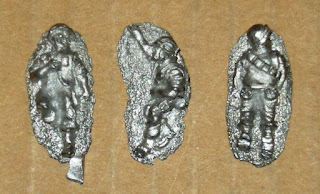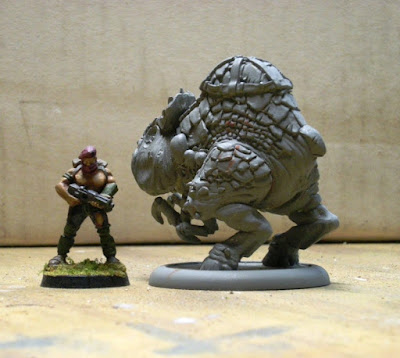The package arrived 10 days (including the weekend) after ordering, with everything in good order and a couple of extras thrown in. All things considered, service was exceptional, and I will definitely order again.
Mostly, I picked up casualty markers, and some crew figures and odds and ends to fill out some squads, which gives me a platoon each of US, PAVN and VC. The figures are in the typical Britannia style (which I love), and since there doesn't seem to be a lot of pics of these out there, they are pictured below with their item numbers/descriptions:
US - NAM20 Five Man Arty Crew
US - NAM07 Private Standing Firing M79 Grenade Launcher
(figure shown from both sides)
US - NAM10 Medic Advancing with M16
US - Two figures carrying wounded comrade
US - NAM19 3*x Dead Figures
(Website states 2x, but you get 3 figs)
VCG05 VC Advancing Firing Various Sub machine guns
VCG04 VC Advancing with rifles
VCG17 3 Wounded VC
VCG18 3 Dead VC
VIL01 Water Buffalo and VIL02 Pot Bellied Pigs






























































